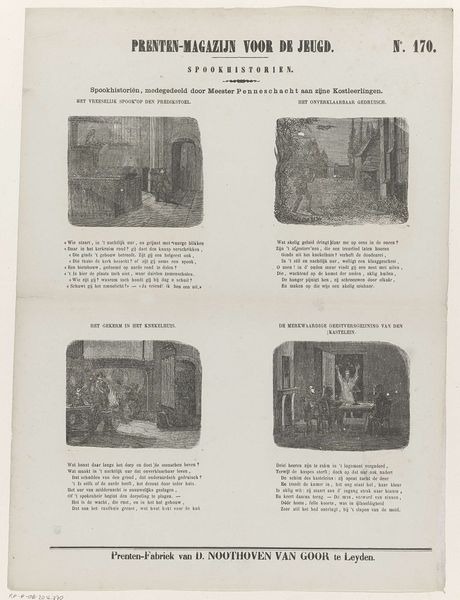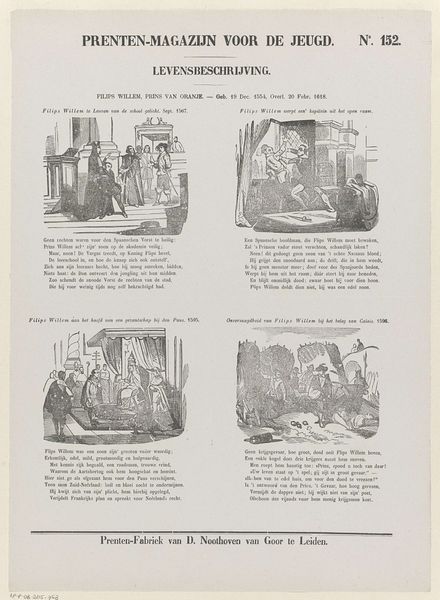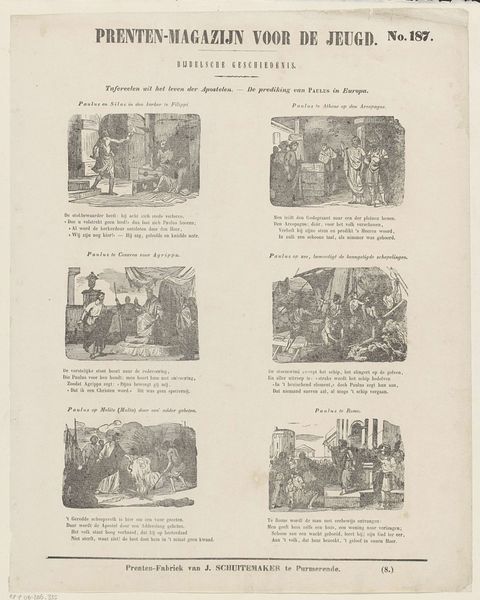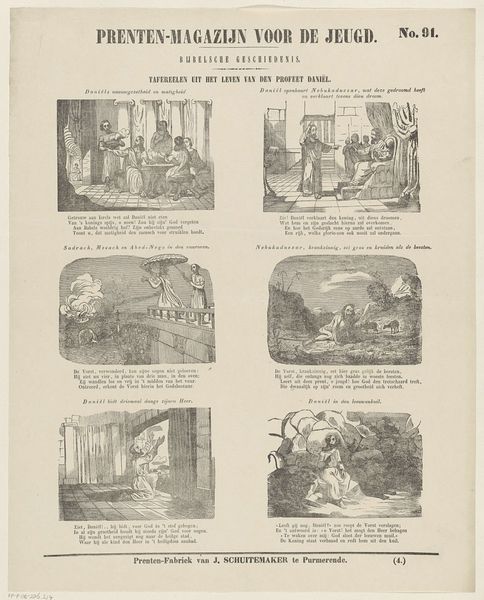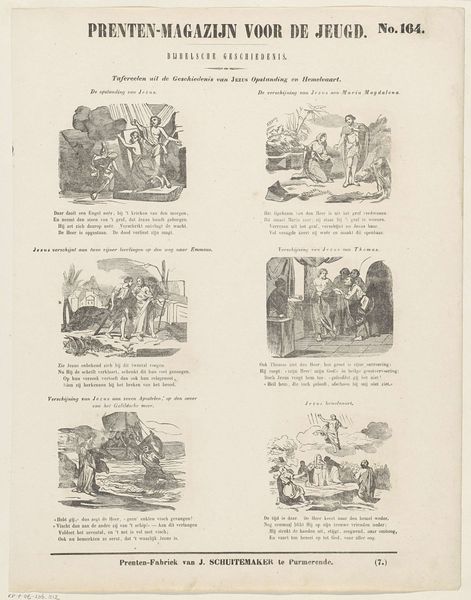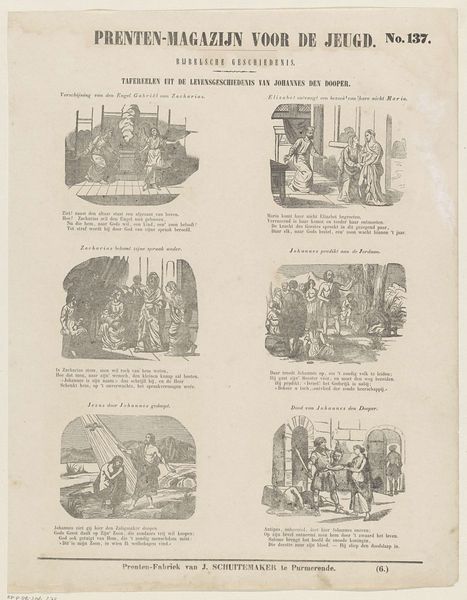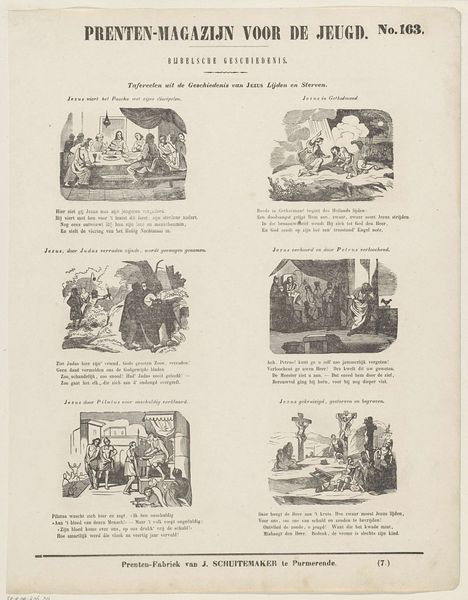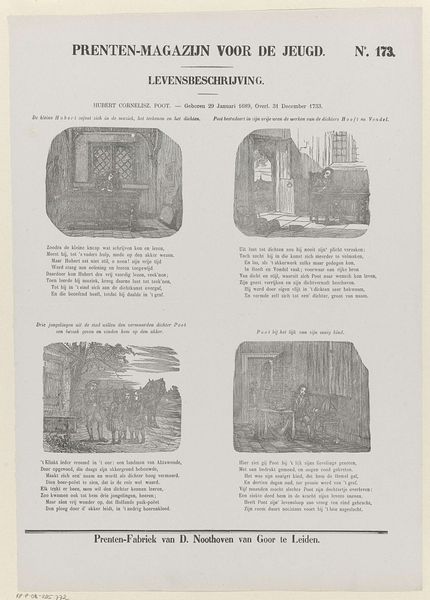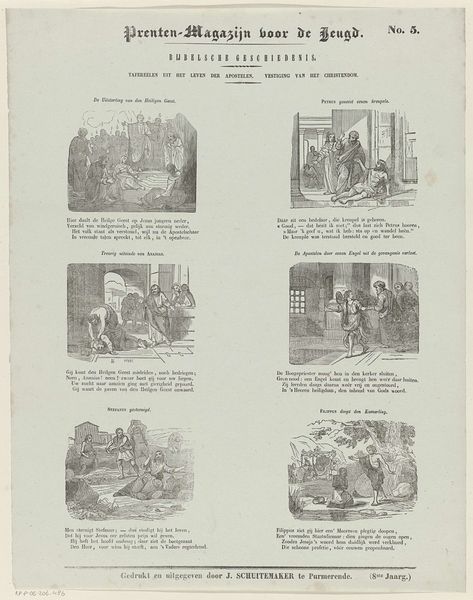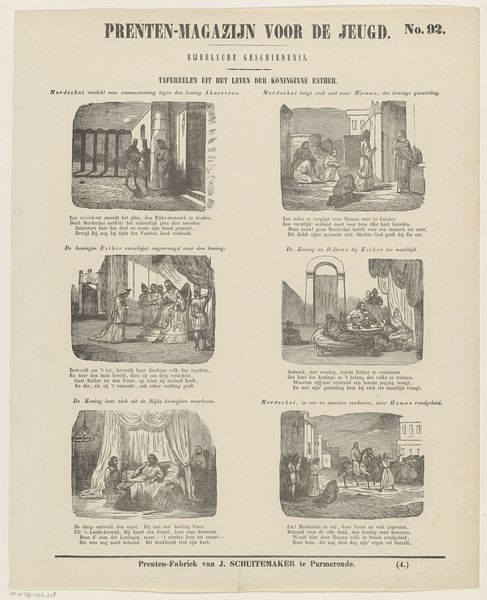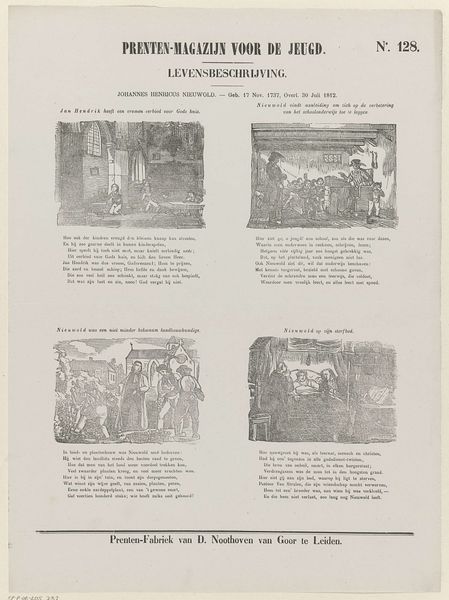
Jan Pieterszoon Koen. - Geb. 8 Januarij 1587, overleden 20 September 1629 1850 - 1881
0:00
0:00
graphic-art, print, engraving
#
portrait
#
graphic-art
#
narrative-art
# print
#
history-painting
#
engraving
Dimensions: height 423 mm, width 298 mm
Copyright: Rijks Museum: Open Domain
Editor: This print, created sometime between 1850 and 1881 by Dirk Noothoven van Goor, depicts Jan Pieterszoon Koen, who lived from 1587 to 1629. It reminds me of an old-fashioned comic strip with its separate images and descriptive text. What’s your read on the significance of breaking up Koen's life in this way? Curator: Ah, it’s like a series of fragmented memories, isn't it? As if Noothoven van Goor is saying, "Here are the key moments, the defining snapshots that comprise the man." Consider that Koen, though considered a hero by some, also embodies a dark side of Dutch colonial history. Could the artist be intentionally distancing himself, presenting these scenes as historical exhibits, devoid of a continuous narrative, perhaps as a way of wrestling with that complicated legacy? It's interesting the sheet has 'Prenten-Magazijn Voor de Jeugd', or print-magazine for youth. Editor: That’s a fascinating angle! The "comic strip" format could be both engaging and distancing simultaneously. I initially saw it as purely informative, but your interpretation adds a layer of critical reflection. Curator: Precisely! It's the beautiful ambiguity of art. I wonder, did young people see it as glorifying conquest, or did those bite-sized glimpses also raise questions? And of course we must remember that these kind of sources could and may be propagandistic in nature. Editor: So, perhaps the fragmented presentation encourages questioning instead of blind acceptance? Curator: Precisely. It might just offer space for dialogue and critical assessment. It is the art of historical interpretation at play. Editor: I hadn't considered that tension, how it visually argues a more nuanced reading of history than you'd expect from the text. Curator: I find that kind of reading unlocks even more exciting paths into the piece and similar images.
Comments
No comments
Be the first to comment and join the conversation on the ultimate creative platform.

